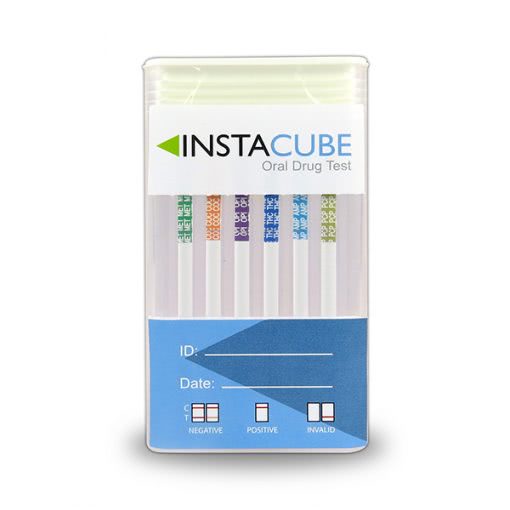Deciding which drug test to apply for new employees can be daunting for all employers…and for a variety of reasons. First, there is no single wonder test without holes in its application. Secondly, the state in which an employer operates determines which methods infringe on civil liberties—but only if the federal government does not have jurisdiction. The federal rules are invoked if the employer is a government agency or a contractor to a federal agency that provides a service where safety to workers and the public may be at risk—most generally trains, planes, and automobiles, but also in the military and construction-related work.
As a good rule of thumb, for most private employers it will be state laws that govern their use of drug testing. Up to now, most employers have opted for urine testing, the proverbial tried and true, but only to a certain extent is it true. Its documented vulnerability to cheating, mostly because of the steps required, and its drug-use window of detection (only up to 72 hours before the test) are two main detractors when compared to other methods.
Blood and hair tests are the other options, but these are clunky in terms of wait time, intrusiveness, expense, and overall convenience, in spite of their comparable solidity in detection. However, saliva testing, the collection of oral fluids with the use of a swab, is edging closer to urine testing in popularity. Greatly due to better technology since employer drug testing was instituted in the 1980s, saliva tests can be correlated more closely to blood concentrations. This advancement, according to government lab results, lends to saliva’s ability to indicate drug use (at least within the previous 48 hours) without question of its validity. Technological strides, though not proven to be responsible for an increase in marijuana detection via oral-fluid tests, are possibly part of the reason saliva testing has recently risen in its detection rate of the No. 1 drug choice among American workers. For many years, it was noticeably inferior to urine testing for detection of marijuana. Only in the past five or six years have studies shown a higher rate of marijuana detection.
The Increasingly Popular Saliva Drug Testing Trend
Following are some of the reasons employers are increasingly opting for saliva tests as their primary means of screening new and even longer-standing employees.
Cheat proof. Because saliva testing can be conducted entirely on site at the workplace, it avoids the risks of tampering, dilution, or substitution—the main methods that workers use to sidestep detection. On-site application means no lab or medical experts are needed; the sample is, therefore, not transported, and results are available to the employer’s hiring manager or human resources department the same day the test is administered.
Drug-detection window. Because saliva can detect drug use within a window of 1 to 2 days, not too shy of urine’s capability (1 to 3 days), it passes muster for many employers who used urine testing in the past.
Convenience, no outside costs. As mentioned in regard to being cheat proof, a saliva test is a one-stop shop. It does not leave the building. What is tested in the workplace stays in the workplace. It offers total employer control and avoids the need of a private space for administering, let alone gender-specific spaces. Saliva tests eliminate excessive lab fees and experts to analyze samples. It does, however, require the procurement of a drug-testing service to provide the training and needed equipment, which is easily storable and portable from one cabinet to the next.
Respectful. Saliva tests are non-intrusive. They do not require needles as in blood tests, cutting of any hair, or peeing in a container off-site and a return of the sample, which all can be vulnerable to privacy violations in various ways.
Versatility. Urine tests cannot detect drugs used within four hours before the test, whereas oral fluids can detect such recent usage. Therefore, saliva testing is most effective for random drug tests and post-accident tests. (Pay heed to your state’s laws, however, when administering random or post-accident tests.) And, though it is playing catch-up to urine tests in regard to marijuana detection, saliva tests prove more sensitive than urine tests to detection of cocaine, opiates, and methamphetamines.
Affordable. Though setup and equipment maintenance are required after hiring a drug-testing service, the cost of saliva testing is less than blood or hair testing and very comparable to urine tests, if not decidedly cheaper in the long run.
So, are there any cons to saliva testing?
As always, the answer is yes. There are downsides to oral-fluid testing, as there are in all the other aforementioned methods. For instance, saliva, like urine, cannot indicate historical usage of drugs. So, if marijuana, cocaine, or another illicit drug is detected, there is no way of telling how often the tested person uses the drug.
Furthermore, saliva tests do not pass go with federal work-sites or those who contract to federal entities. Urine and hair tests are the standard for these workplaces, as mandated by federal law. However, the U.S. agency responsible for behavioral health advocacy and leadership is making the case for allowing saliva testing at federal work-sites. So, only time will tell if saliva testing has what it takes to cut it when it comes to government testing.
from
https://drugtestsinbulk.com/blog/is-saliva-testing-right-for-your-workplace/
No comments:
Post a Comment